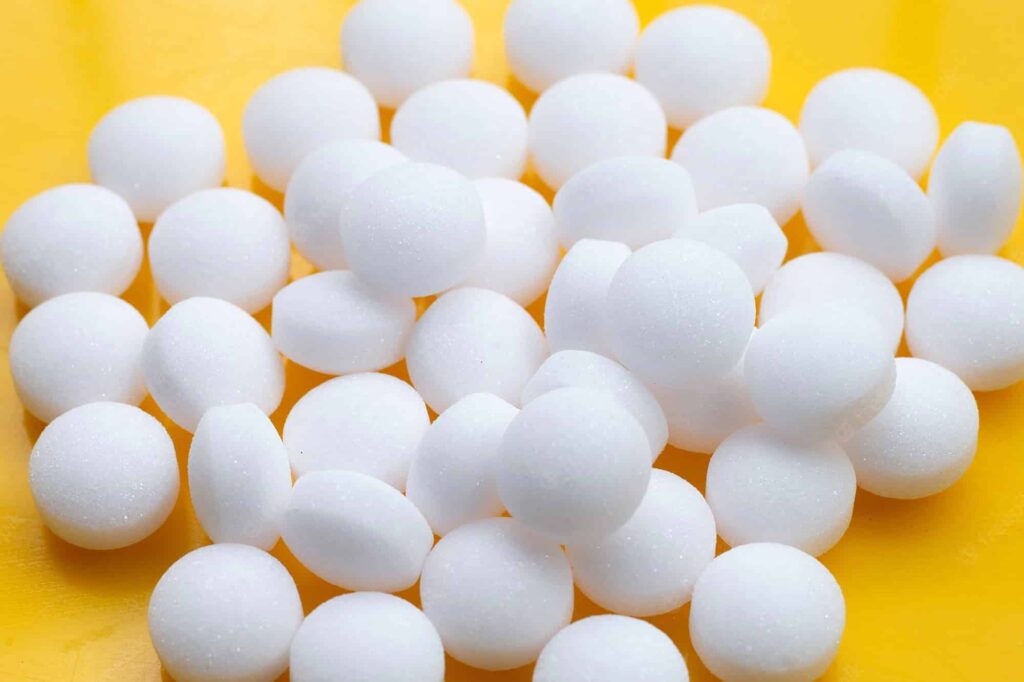Project Report For Naphthalene Balls Manufacturing Plant
Introduction
Project report for Naphthalene Balls Manufacturing Plant is as follows.
Naphthalene balls are widely used as a domestic preservative for woolen clothing and as a deodorant tablet for toilets, urinals, and baths, among other things.
These are made from naphthalene flakes using a tablet making machine with a ball form die. This industry, which requires little machinery and technological know-how, may be launched on a modest scale and be profitable.
Project Report Sample Of Naphthalene Balls Manufacturing Plant
Get Completely Custom Bankable Project Report
Naphthalene flakes are supplied into a jacketed tank where the temperature is maintained at 88 ° C and the material is stirred by an agitator. When naphthalene melts, other materials such as paraffin wax, camphor, and so on are added and well blended. The liquid bulk is poured into a china ball press or an aluminium mould. The naphthalene balls are removed and packaged after cooling.
This sweetener has also been linked to a number of health advantages, such as decreased blood sugar and cholesterol levels.

The most prevalent component of coal tar is naphthalene. Although the content of coal tar varies depending on the coal from which it is generated, coal tar is generally around 10% naphthalene by weight.
Naphthalene balls, often known as Naphthalene balls, are extensively used as excellent domestic preservation of woollen clothing and as a deodorant pill to improve bathroom hygiene. Naphthalene balls can be used as toilet air fresheners to manage smells, as well as to protect and preserve woollen clothing from moths and moth larvae.
Market Potential Of Naphthalene Balls Manufacturing Plant
Expenses

Product Cost Breakup

Reveneue Vs Expenses

Market Trend

Naphthalene C10H8, also known as a hydrocarbon colourless crystalline flaking solid with the odour of mothballs. Naphthalene C10H8 is an aromatic hydrocarbon that contains two aromatic compounds with condensed rings.
Excessive naphthalene exposure can harm blood cells, resulting in a disease known as haemolytic anaemia. This syndrome has been observed in persons, particularly youngsters, who have consumed naphthalene-containing mothballs. Fatigue, lack of appetite, nausea, vomiting, and diarrhoea are some of the symptoms that may develop following exposure to excessive amounts of naphthalene. The skin may become pale or yellowish.
If newborn newborns are exposed to naphthalene, their blood cells are more vulnerable to damage. Damage to their blood cells causes a substance (bilirubin) to be released, turning the newborn yellow and, in severe cases, causing brain damage

